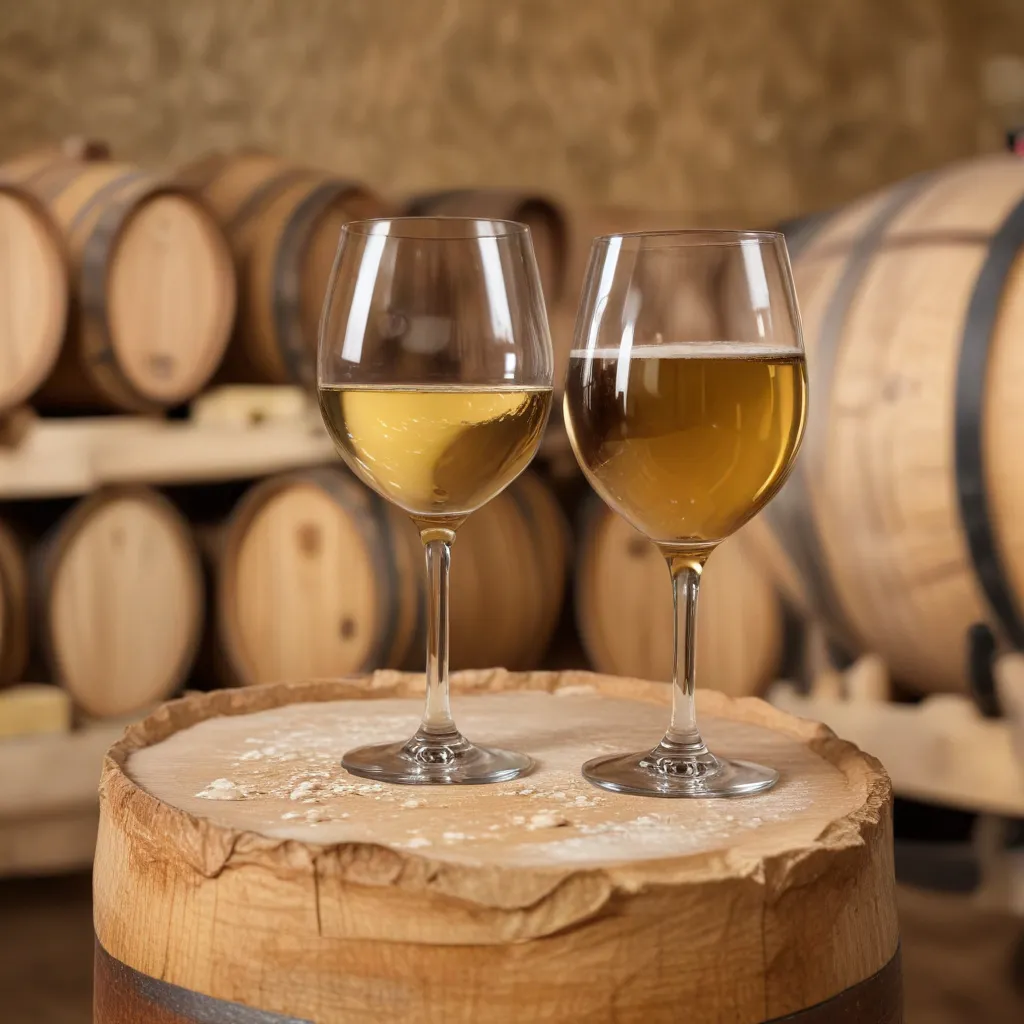
Wine is a delicate and complex beverage, with its flavor and aroma largely influenced by the selection of yeast strains used during fermentation. As vintners, we understand that the choice of yeast can make all the difference in crafting the distinct profiles that define our wines. In this article, we’ll explore the pivotal role yeast plays in winemaking, from shaping the sensory experience to preserving the unique terroir of our estate.
Yeast’s Influence on Wine Flavor
At the heart of winemaking lies the transformation of grape juice into wine, a process orchestrated by the humble yet powerful yeast. Saccharomyces cerevisiae, the primary yeast species used in winemaking, is responsible for converting the sugars in grape juice into alcohol and carbon dioxide through the process of fermentation. But the influence of yeast goes far beyond this fundamental role.
Different strains of S. cerevisiae can produce markedly different effects in wine, influencing everything from aroma to mouthfeel. One yeast strain might enhance floral notes in a Riesling, while another could promote the buttery richness in a Chardonnay. This diversity allows winemakers to carefully select the strains that best complement their grape variety and desired wine profile, utilizing the yeast’s natural properties to craft distinct styles.
Yeast Selection Criteria
When selecting yeast strains, winemakers consider a range of factors, including the desired flavor and aroma profiles, fermentation kinetics, alcohol tolerance, and even the yeast’s ability to withstand stressful conditions. Some yeasts excel at producing fruity esters, while others are known for their capacity to degrade malic acid, a key factor in the perceived acidity of the wine.
The decision between using wild, native yeasts or commercial, cultured strains is a pivotal one in winemaking. Wild yeasts, which naturally occur on the skins of grapes, can impart complexity and unpredictability to the wine, often desired in artisanal batches. Conversely, cultured yeasts are selected and grown in laboratories for their predictability and specific flavor profiles, offering consistency and control over the fermentation process.
Yeast Strain Characteristics
The diverse range of yeast strains available to winemakers allows for a remarkable degree of customization. Some strains are known for their ability to enhance mouthfeel through the production of glycerol, while others excel at suppressing undesirable sulfur compounds. Certain yeasts thrive in cool fermentation environments, preserving the delicate aromas of white wines, while others perform better in warmer conditions, contributing to the robust character of red wines.
The interplay between yeast and other winemaking variables, such as temperature, pH, and nutrient levels, further underscores the complexity of this microbial partnership. Winemakers must carefully monitor and adjust these conditions to optimize yeast health and activity, ensuring a successful fermentation that captures the essence of the grape.
Diversity of Yeast Strains in Winemaking
The rich tapestry of yeast strains used in winemaking reflects the global nature of the industry and the desire to capture regional terroir. From the time-honored Burgundian strains of France to the innovative isolates emerging from New World regions, each yeast strain brings a unique set of capabilities to the winemaking process.
Native Yeast Strains
In the pursuit of authenticity and complexity, many winemakers have embraced the use of native, wild yeasts in their fermentations. These yeasts, which naturally occur on the grape skins, can impart distinctive flavors and aromas that are inextricably linked to the local environment. The incorporation of native yeasts is particularly prevalent in the production of natural wines, where the goal is to showcase the inherent characteristics of the grape and the vineyard.
Commercial Yeast Strains
Alongside the use of native yeasts, the wine industry has also benefited from the development of specialized, commercially available yeast strains. These strains, often the result of extensive research and development, are designed to enhance specific aspects of the winemaking process, such as increased ester production, improved alcohol tolerance, or the ability to degrade malic acid.
Yeast Strain Diversity and Terroir
The selection of yeast strains can also play a crucial role in the expression of terroir, the unique combination of environmental factors that impart distinctive characteristics to a wine. By choosing yeasts that are well-suited to the local climate, soil conditions, and grape varieties, winemakers can amplify the subtle nuances of their vineyards, creating wines that are truly representative of their place of origin.
Winemaking Techniques and Yeast Strains
The interplay between yeast and winemaking techniques is a delicate dance, with each step choreographed to extract the best from the grape and the microorganism. From fermentation processes to aging and maturation, the choice of yeast strain can have a profound impact on the final product.
Fermentation Processes
During the fermentation stage, the selected yeast strain is responsible for converting the sugars in the grape juice into alcohol and a range of other compounds that contribute to the wine’s aroma and flavor profile. The temperature, pH, and nutrient levels of the fermentation environment can all influence the activity and performance of the yeast, ultimately shaping the sensory characteristics of the wine.
Aging and Maturation
Even after the initial fermentation, the influence of yeast can continue to evolve during the aging and maturation process. Certain yeast strains are known for their ability to withstand the stressful conditions of sur lie aging, a technique that involves allowing the wine to remain in contact with the yeast lees for an extended period. This interaction can impart complex flavors and a creamy mouthfeel to the wine.
Yeast Strain Selection Strategies
Winemakers often employ a range of strategies when selecting yeast strains, balancing the desired flavor and aroma profiles with practical considerations, such as fermentation efficiency and stress tolerance. In some cases, they may choose to blend multiple yeast strains, each contributing unique attributes to the final blend.
The Impact of Yeast Strains on Wine Styles
The diversity of yeast strains used in winemaking is a crucial factor in the creation of distinct wine styles, from the bold and structured reds to the delicate and aromatic whites.
Red Wine Yeast Strains
For red wine production, winemakers often select yeast strains that can enhance the extraction of tannins and anthocyanins, imparting structure and depth to the final wine. These strains may also be chosen for their ability to produce esters that contribute to the wine’s aromatic complexity.
White Wine Yeast Strains
In the realm of white wines, the selection of yeast strains is often focused on preserving the grape’s inherent freshness and varietal character. Strains that are known for their ester production or their ability to degrade malic acid can be instrumental in crafting vibrant, fruit-forward white wines.
Specialized Yeast Strains
Beyond the traditional red and white wine categories, the wine industry has also seen the emergence of specialized yeast strains designed for niche applications. For example, cryophilic yeasts, which thrive in colder fermentation environments, have become increasingly popular for the production of crisp, aromatic sparkling wines.
As winemakers continue to explore the vast potential of yeast, the future of wine promises to be an ever-evolving tapestry of flavors and aromas, each strand woven by the skilled hands of the vintner and the unsung contribution of these microbial partners.
Discover the delightful synergy of our estate-grown produce and expertly crafted wines by visiting the Wine Garden Inn. Our knowledgeable team is dedicated to providing you with an unparalleled culinary and wine tasting experience, showcasing the harmonious relationship between the vineyard and the table.
